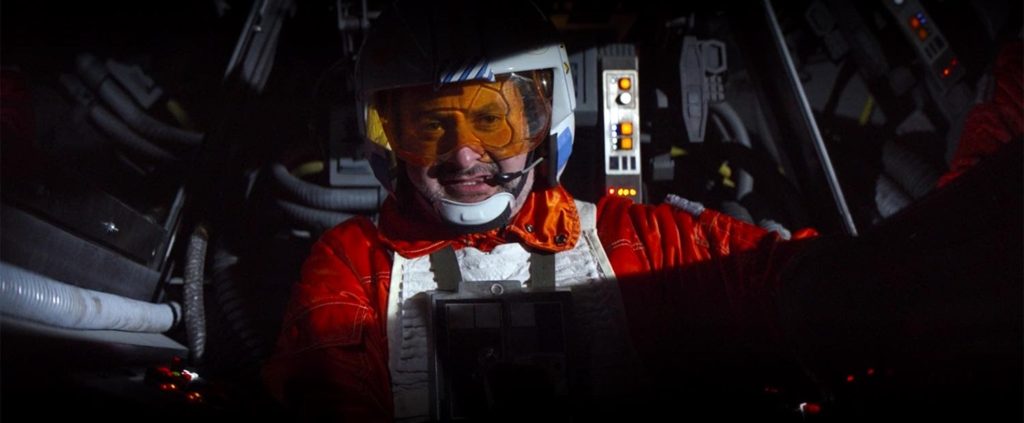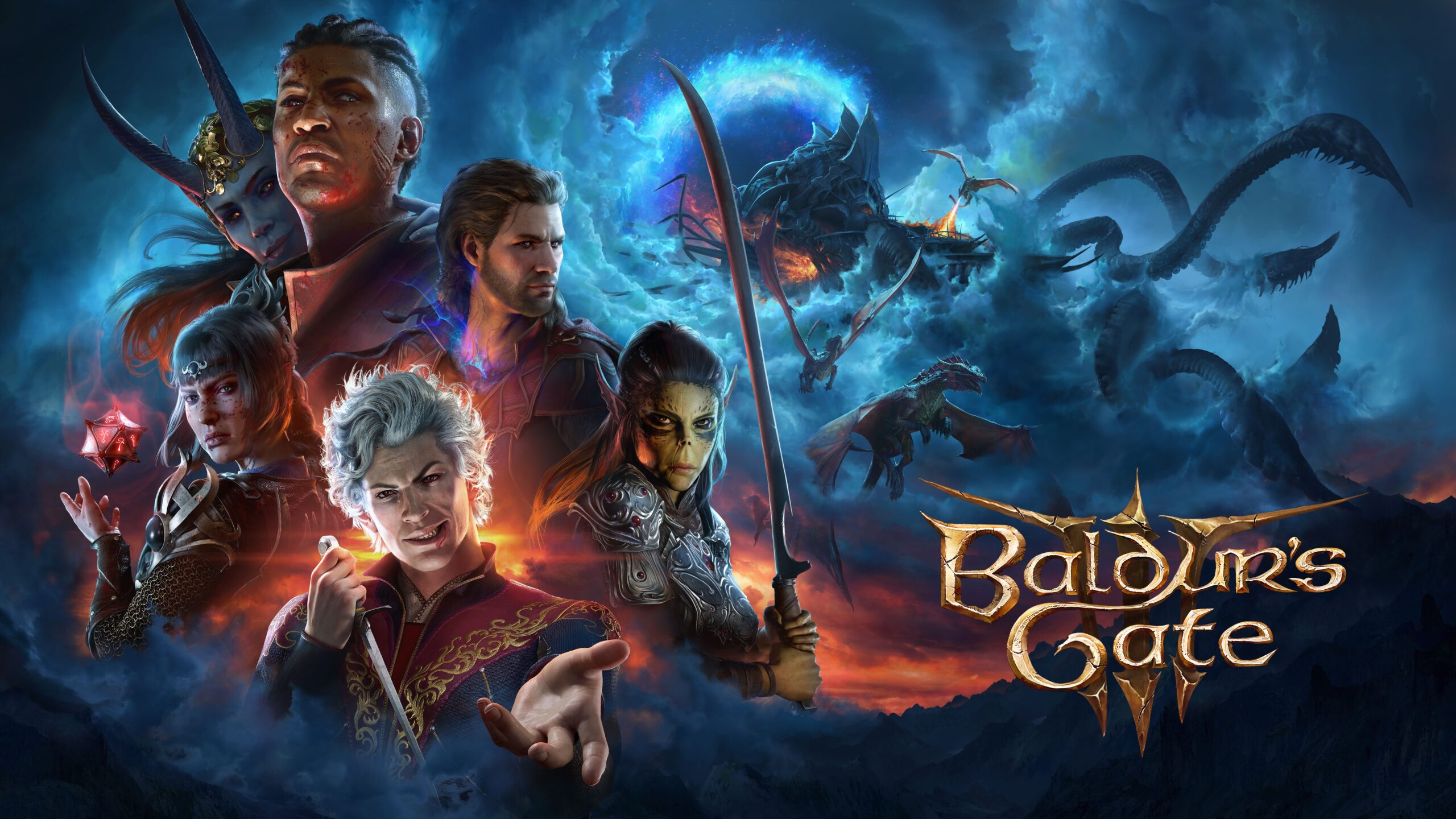
Star Wars Squadrons: Space Sim or Saga Savior?
It has been nearly two decades since a dedicated space combat Star Wars title was released, and in a year of seemingly endless video game delays and disappointments I was not expecting one to come along in 2020. More than a couple generations of consoles have come and gone since games like Star Wars Starfighter and Star Wars Rogue Squadron were trying to salvage what they could from the poorly received prequel trilogy, and after the success of Star Wars Jedi: Fallen Order, I assumed that any upcoming Star Wars games attempting a similar salvage operation on the franchise would focus more on the lightsaber-filled, action-adventure genre.
So I was surprised at the announcement of Star Wars Squadrons— surprised and a little terrified. There was an unmistakable and familiar sense of hesitation I felt picking up Squadrons on sale for nearly half off a mere six weeks after its initial release in early October. However I figured that with EA on the cover, Squadrons was bound to either be surprisingly enjoyable or so laughably terrible some of the rougher parts of my year might look brighter in comparison.
Honestly, even without a VR headset or HOTAS (hands-on-throttle-and-stick) setup, just the bare-bones console version offered way more than I was expecting. No micro-transactions or loot boxes locking content behind paywalls and a fully fleshed out, albeit slightly short, single player campaign mode? The game even launched with a modest $40 price tag, which is downright merciful in a video game market that is doing its best to normalize $80 or more for AAA titles. Absolutely groundbreaking stuff from EA.

What stuck with me the most from my time playing Squadrons was the almost uncharacteristic level of detail that went into making this game look, sound, and feel like a Star Wars title (something that is decidedly absent from campaign modes in prior EA titles like Star Wars Battlefront II). This level of attention and polish is what makes flying so damn satisfying, and it is ultimately what turns cheesy dialogue and a cliche story into an enjoyable and indulgent ride. It is because Squadrons is able to execute the smaller things so well that the larger aspects of the game succeed.
Looking at screenshots, it becomes immediately clear just how much inspiration the development team over at Motive Montreal drew not only from the older movies, but from the older starfighter titles like Star Wars Tie Fighter and Star Wars X Wing vs Tie Fighter as well. The choice to lock the player into a first-person cockpit perspective like the older space sim games is what gives Squadrons its unique and authentic feel. Forcing players to rely on the varied instruments and gauges in their starfighter makes those small, immersive details feel essential and not just superficial or aesthetic.

I think, ultimately, that is what rescued Squadrons from the undesirable fate that many second-rate Star Wars games (and many recent Star Wars films) face— authenticity and direction. The game committed to the decision of first-person based space combat, and every aspect of the gameplay builds on that. Seeing the cosmetics and other unlockable trinkets jostling around my cockpit as I barrel roll my way past an enemy frigate makes me feel like a hotshot pilot with a backstory, and the better you get at maneuvering the different classes of starfighters, the more satisfying this feeling gets.
After a perfectly executed boost drift, your character rewards you with a celebratory cheer and even these insanely cheesy little moments are integral to cultivating an authentic Star Wars experience— they are campy, and camp is essential to the franchise. After all, there is something about shooting a tiny exhaust port on a space station megaweapon that is simultaneously nonsensical and perfectly logical. This suspension of disbelief drives so many iconic Star Wars moments, prioritizing the cool above the real, and translating it into the world and characters we have grown to know and love. Why else would we be able to hear explosions or to boost drift in space? Because it is cool and because those aspects become characteristic of the world in which they take place.
Luckily, the story for Squadrons seems to understand and accept these strengths. There are no major character cameos or forced fanfare, and at no point does R2-D2 swivel his way into the hangar to let you know you are indeed playing a Star Wars game. The game simply focuses on its own story and its place in the universe, and it doesn’t need to reinvent the entire saga to accomplish this. Even without iconic Imperial baddies or legendary Rebel leaders, the motivations for each faction are clear and believable. While the story elements play out the standard Star Wars formula in reverse (SPOILER: the good guys are making the superweapon this time around), the substance of the campaign comes from the characters and the gameplay, and so that is what it focuses on.
I was glad that the story pulled out some of my favorite Star Wars tropes. Sure, I could say that the characters offer a lively and spirited representation of the kind of archetypes one could expect to find in the hangar of a New Republic ship. More honestly, though, I think the pilots on both Titan Squadron and Vanguard Squadron lean into their cliche roles with an indulgent and fully enjoyable level of believability.
There are, at times, moments of surprising clarity and nuance that manage to sneak into the dialogue snippets in between missions. At one point, my Imperial co-pilot admitted to me that he had lost all hope for the war ever reaching an end, and that, at this point, the Imperial cybernetics keeping him alive made him more machine than human.

At another point, after the New Republic’s secret superweapon had begun production and the characters started muttering about finally evening the playing field with the weakened Empire, a member of Vanguard squadron asked sarcastically why they couldn’t just build another Death Star and be done with it already. I almost dropped my controller when I heard it.
These inspired moments of worldbuilding that pop up sporadically throughout otherwise static dialogue sequences are some of the most redeeming parts of the campaign. Just having these surface-level details and glimpses of insight into this ill-defined area of the Star Wars lore is a blessing that leaves me wanting more. Seeing a fractured Empire marred by infighting and a burgeoning New Republic suffering from growth pains is compelling and unbelievably refreshing. It was the absence of continuity or any sense of consequence that doomed the Disney trilogy to a painfully slow death by abstraction in the first place. Games like Squadrons may have a relatively small impact on the overall canon of a franchise as big as Star Wars, but they do the dirty work of tying these massive films and sagas together.
Yes, the story boils down to a small bit of worldbuilding and a standard array of missions essentially entailing blowing up things of varying magnitude. But this is great! Satisfying, even. There almost isn’t room for compelling character arcs or revelatory plot twists in this package. So much of what this game is trying to accomplish— and what it does accomplish so much of the time— is capturing the awesome, childlike wonder of flying an X Wing in space.
It is the same reason why Dave Filoni himself, the irreverent Star Wars prophet that he is, chose to make his cameo on The Mandalorian as a New Republic X-Wing pilot. It’s cool as shit. Taking several steps back from the onslaught of spectacle that is Disney’s sequel trilogy, it becomes so obvious how alluring and expansive the world of Star Wars is outside of the big screen moments. The bounty hunters, pilots, and troopers give context and nuance to the grandiose lightsaber-wielding Jedi or Sith that have become emblematic of the series.

Games that give this simple premise the attention and devotion it deserves are remembered fondly for their contributions to their respective sagas, and they have the unique power of absolving otherwise unerasable sins from the cinematic universe. Star Wars Squadrons is part of the healing process, and while it could have so easily been another terrible footnote to 2020, I think it has the potential to revive a long-forgotten genre and to restore balance to the force— I mean the franchise.






This review actually makes me want to buy and play the game. So unified, precise, and cuts to the heart of why I want a Star Wars game: “Seeing the cosmetics and other unlockable trinkets jostling around my cockpit as I barrel roll my way past an enemy frigate makes me feel like a hotshot pilot with a backstory, and the better you get at maneuvering the different classes of starfighters, the more satisfying this feeling gets.”
Spot on, mate.